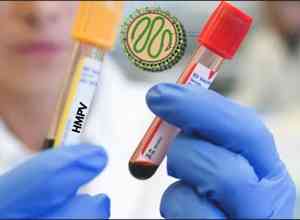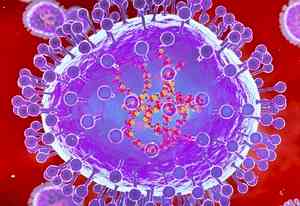Mouth sores and loosening of teeth can be a sign of gum cancer
When gums become swollen and red or when there is a sudden growth on the gums that wasn’t before, one begins to wonder! Could it be cancer? One can experience unexplained bleeding and pain in the gums, due to loosening of the teeth or weakening of the gums, which can also be a vital sign of a form of oral cancer known as gum cancer. Not all gum swelling or redness is cancer but if it persists for more than 3- 4 weeks, then it needs visit to specialist.

By Dr. Rajeev Sharan, HOD & Sr. Consultant, Head and Neck Cancer and Thyroid Surgery, HCG EKO Cancer Centre, Kolkata
When gums become swollen and red or when there is a sudden growth on the gums that wasn’t before, one begins to wonder! Could it be cancer? One can experience unexplained bleeding and pain in the gums, due to loosening of the teeth or weakening of the gums, which can also be a vital sign of a form of oral cancer known as gum cancer. Not all gum swelling or redness is cancer but if it persists for more than 3- 4 weeks, then it needs visit to specialist.
Gum cancer is a form of an oral cancer. It is a type of head and neck cancer that begins when the cells in either the upper or the lower gums begins to grow out of control and form lesions or tumors. The early visible signs could be a white or red patch inside the mouth or on the lips. Sometimes the overlying skin may also feel thicker or nodular or there may be a persistent ulcer or erosion in advanced cases. At the onset, it looks like a bump or a sore that does not heal. Also, the teeth near the sore start becoming loose and at times even the dentures do not fit quite well.
This cancer is often mistaken for gingivitis which is caused by plaque build-up. Both gingivitis and gum cancer are two separate things, and both need to be taken seriously and needs consultation with specialist. People, who are habituated to smoking cigarettes, cigars or pipes or are used to chewing tobacco, gutkha, hookah or shush, are most likely to contract oral cancer or gum related cancer.
Early signs and symptoms of gum cancer
● A mouth sore that does not heal for 3-4 weeks
● White or reddish patch inside mouth
● Loose teeth
● A growth or lump inside the mouth
● Pain in the mouth and ear
● Difficulty in chewing and swallowing
● Swelling or thickening, lump or rough spots or eroded areas on lips, gums, cheeks or other areas inside the mouth
● Unexplained bleeding or numbness, loss of feeling of the lips or pain and tenderness in any area of the face, mouth or neck
● Unexplained weight loss
Stages of gum cancer
The TNM system is used to classify the stage of oral cancer, in which T stands for the size and location of the primary tumor, N specifies if the tumor has spread to the lymph nodes while M indicates whether the tumor has metastasized or spread to other parts of the body.
Some of the different stages of oral cancer are:
● Stage 0 – which is also known as carcinoma in situ, it arises when abnormal cells are found in the lining of lips or oral cavity with the potential to progress into cancer.
● Stage 1 – the abnormal lining of cells has progressed into cancer cells. They are small in nature and have not spread to the lymph nodes or to any other part of the body.
● Stage 2 – the abnormal cancer tumors grow but have not spread to the lymph nodes to any other part of the body.
● Stage 3 - The tumors are larger than 4 cm in diameter and have reached the neck's lymph nodes.
● Stage 4 – the tumours have spread to nearby tissue, such as the jaw or other parts of the oral cavity and also distant parts of the body beyond the mouth, such as the lungs.
Treatment
Before recommending the treatment, the healthcare provider considers factors like the nature of cancer and whether the cancer has spread from the original site to the other parts of the mouth and throat or to the other parts of the body besides considering the general health and age of the patient. Also, treatment varies from surgery to radiation therapy and chemotherapy depending on the spread of the cancer.
Some of the prominent treatment for gum cancer are:
● Mandibulectomy - A procedure to remove cancerous lesions around the jawbone which may be marginal or segmental mandibulectomy depending on the extent of disease.
● Partial Maxillectomy - Surgery to remove cancer in the upper gum or roof of the mouth
● Neck dissection - Surgery to remove the lymph nodes in the neck that contain or are likely to contain the cancer cells
● Jaw bone reconstruction - in case of segmental mandibulectomy, jaw bone can be reconstructed with leg bone (fibula) with help of microvascular surgery
● Adjuvant radiation or chemoradiation in the post op, depending upon the final pathology reports
The earlier the diagnosis, simpler the surgery, better function and cosmesis post treatment and the highest chances of survival post treatment. Gum cancer is highly curable, provided it is diagnosed early. Hence it is important to keep the mouth healthy and moist and the teeth and gums clean at all times.


 City Air News
City Air News 













